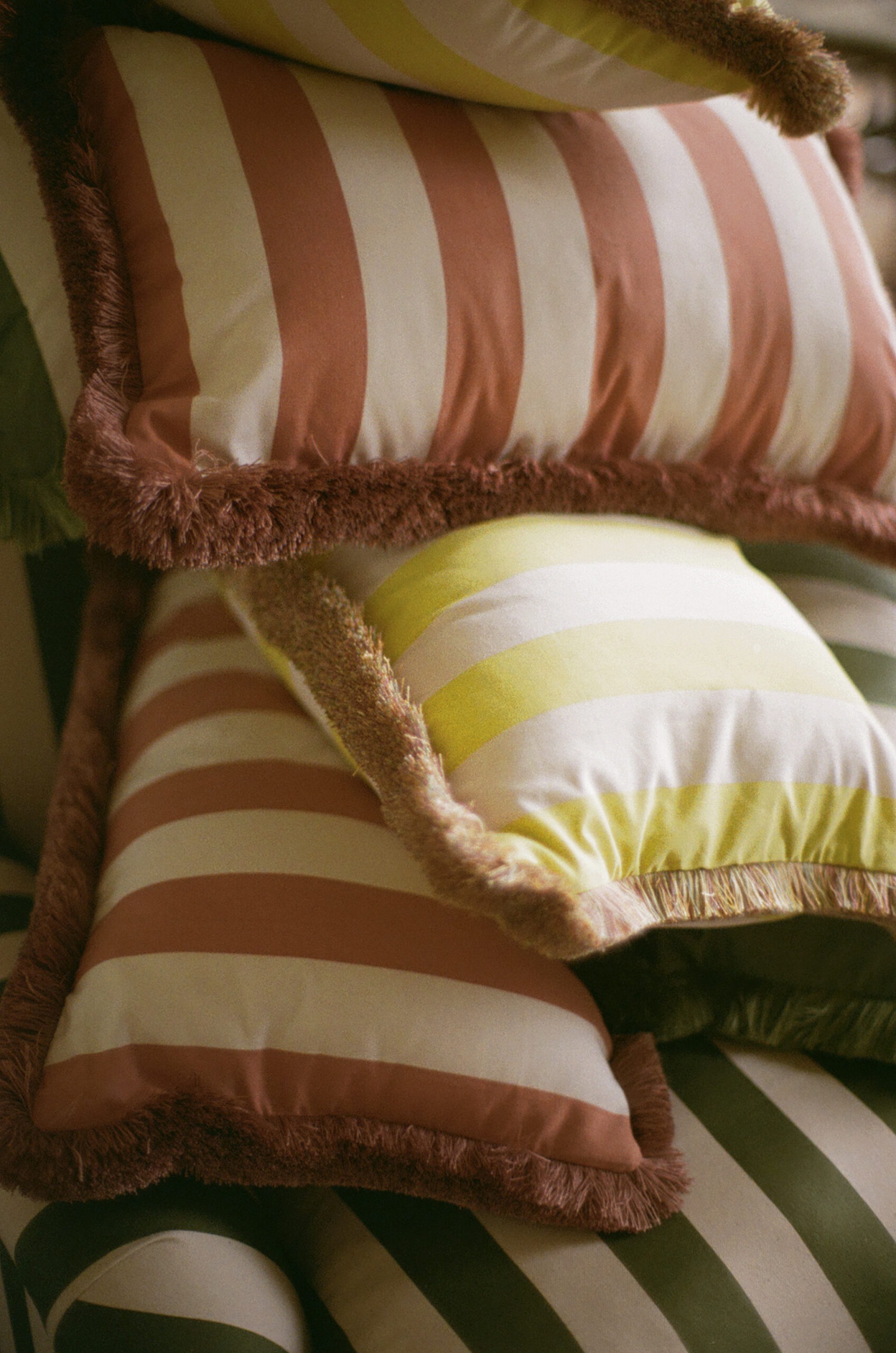We meet Emma Burns at her home in sunny Kensington for a conversation about distinctive style, her tips for budding designers and what she has learnt from a career spent working in London’s most celebrated design firms.

Burns cut her design teeth at Charles Hammond, an old-school firm established in Sloane Street in 1907, where she assisted Vernon Mark in producing fabrics. She was Decorating Assistant to Ngila Boyd and Ian Shaw, before being headhunted by Sibyl Colefax and John Fowler to run the North Room showroom in Brook Street. Here she catered for glamorous Claridges-dwelling Americans, desperate to source archetypal English wallpapers and furnishing fabrics. During the eighties Colefax and Fowler was synonymous with English country chintz that was all the rage on both sides of the Atlantic.

Emma Burns joined a design team under the leadership of Roger Banks-Pye, for whom she credits a great deal of her own taste and distinctive eye. Banks-Pye’s singular passion knew almost no bounds; she recalls, “he persuaded one client not only to have all the woodwork on her estate painted a particular blue, but all the Land Rovers were sprayed exactly the same shade. She did draw the line however at his idea of extending the blue and white theme further by having a driveway made from chips of white marble and blue lapis lazuli.” Nowadays she continues to find influences from diverse sources and people around the world, including David Hicks, John Stefanidis, and a recent trip to Buenos Aires.

As for Burns’s current work, she is excited about a new phase in the history of Sibyl Colefax and John Fowler as they leave the building in Brook Street that she has worked in for over 30 years. For the designer, “change is extremely healthy… it’s really energizing to be moving to a new space which is architecturally worlds apart from this 18th century townhouse.”
Surely there is a temptation for an interior designer to keep collecting items for themselves? It must be difficult to know when one’s own home is ‘complete’. Burns is philosophical on this point, “for oneself it is almost impossible not to dither.”




Casting an eye around her sophisticated home, the space feels curated but there is little sense of fussiness or hesitation. One of her favourite pieces is a striking 1930’s portrait by Stella Stein in the sitting room, indeed many of the paintings evoke a cool Modernist palette.

When she bought the house it needed essential maintenance and at one point she could stand in the kitchen and see the underside of the roof during the redesign. She kept the design simple, choosing to add glamour through luxurious details such as amber glass doorknobs to catch the light.






Other light touches can be found in the bathroom, where the nickel legs on the basin open up the room by allowing light to pass through. Above the basin is a medicine cabinet disguised by a hinged Venetian mirror (below, right).


While she would like to have her ashes scattered at the Conran Shop, Burns is full of surprising advice for how more simple design statements can be produced with limited means or effort.

One of the most important things we appreciated when looking around Burns’s inspiring home was the significance of living with beautiful objects accrued over time. Whether or not you are decorating for yourself, or for someone else, “if there is trust there is nothing that cannot be achieved”. The advantage of working with a designer like Burns is the dialogue of ideas and influences, and a home that is a testament to a lifetime of thoughtful conversations about design.


Top tips:
“Play with colour – be individual, don’t follow the crowd. I’m so depressed when I look in estate agent’s windows and see yet another bland, neutral interior. Have fun. Paint is so easy and inexpensive to apply and you can change the mood of a room completely with a new wall colour.
Scour charity shops for tea towels and napkins that could be made into lampshades, lined with gold card – the light will be forced downwards rather than out so you will create pools of light which is much more glamorous.
Keep your curtains simple, hang them on thin poles and rings, they should break on to the floor by 5cm – never use tie backs, they crease the curtains and look like a bad belt on a dress.
Always put your light switches at 850mm from the floor – it’s the perfect height for your hand and they are never in the way of picture hanging.
A simple arrangement of round pebbles atop a piece of furniture, like Jim Ede’s ‘Spiral of Stones’ arrangement at Kettle’s Yard in Cambridge (former art collector and creator of Kettle’s Yard), can be one of the most stunning things.
Source inexpensive kitchen cabinets, replacing the handles, and adding a honed marble worktop, in order to avoid the neutral and anonymous interiors so ubiquitous in estate agents’ windows.”
Photography by Tine Bek.


